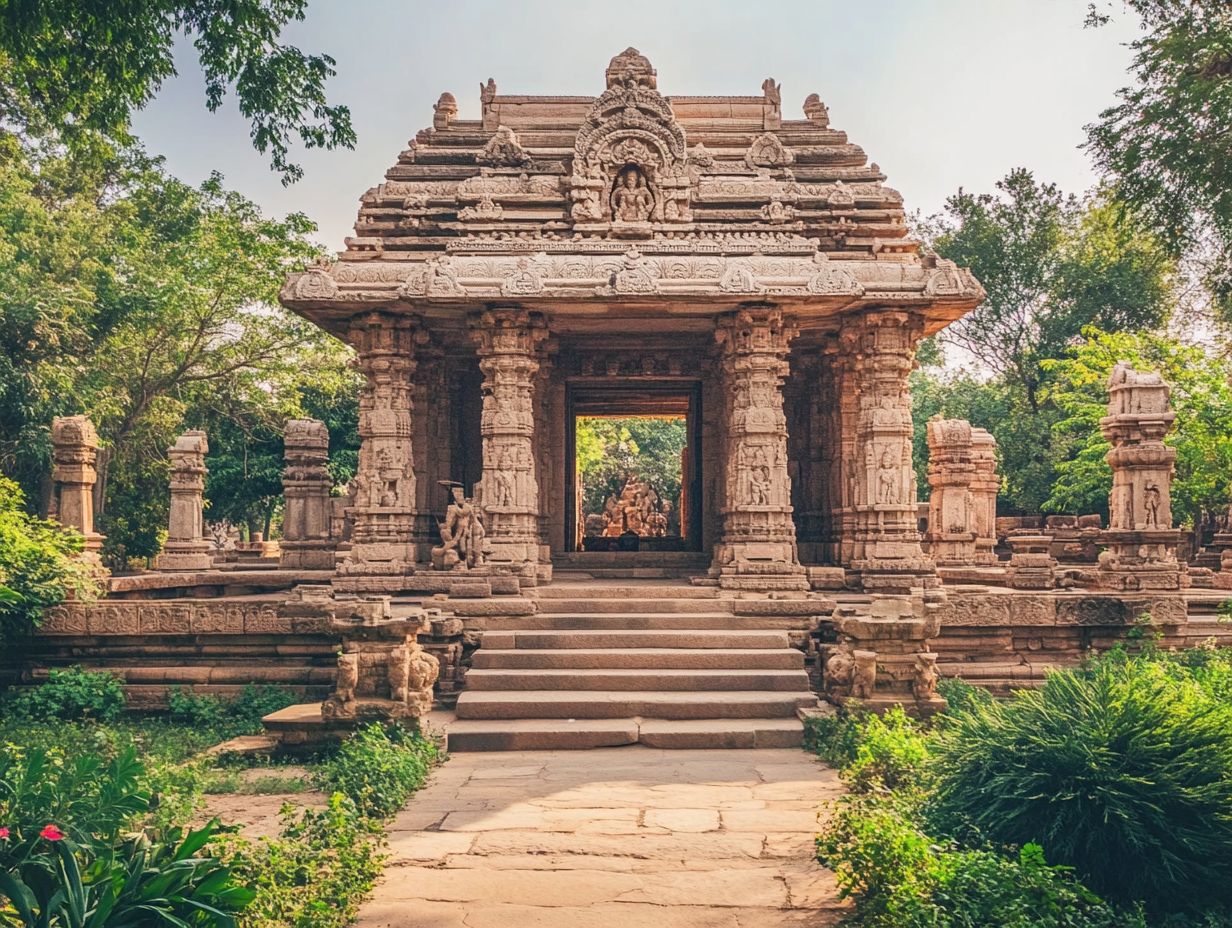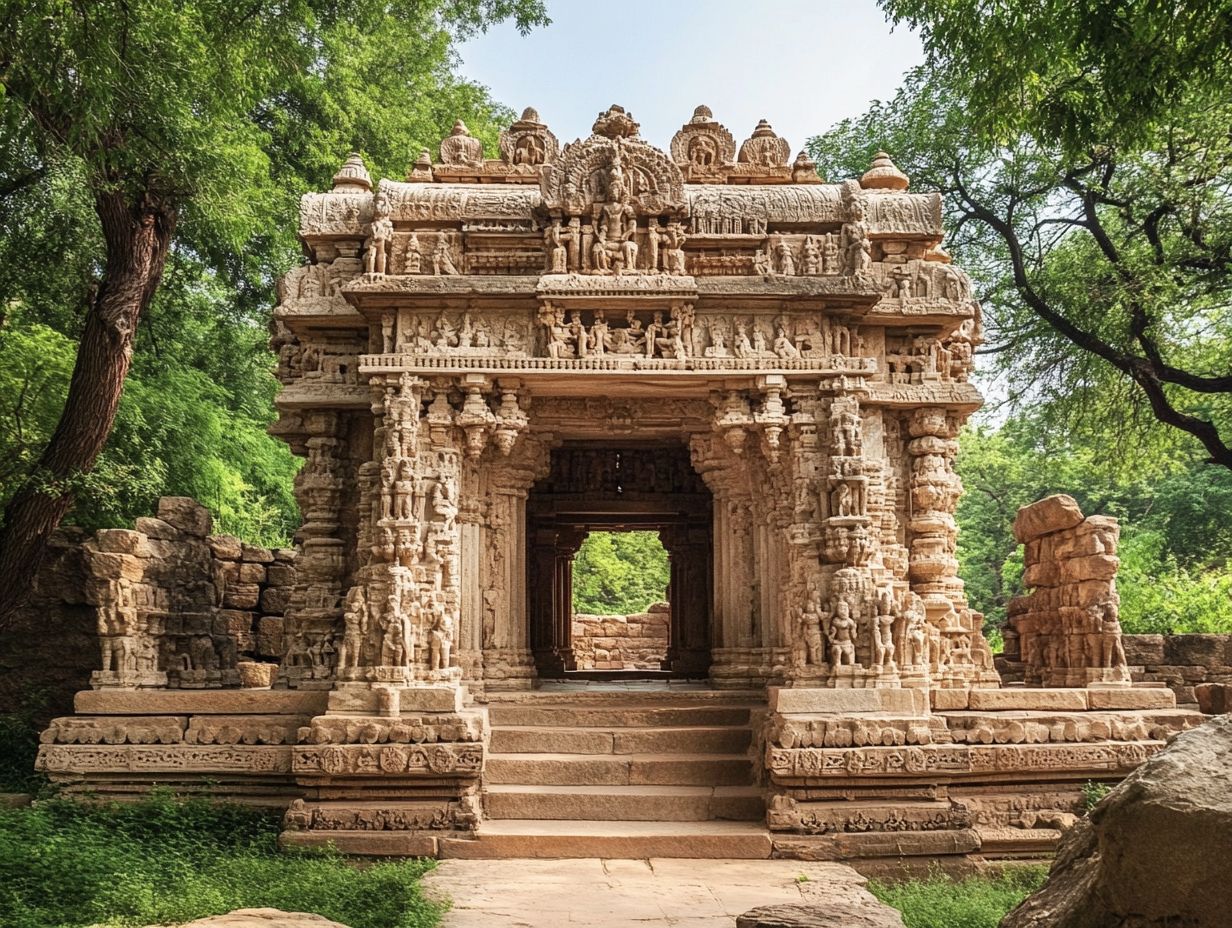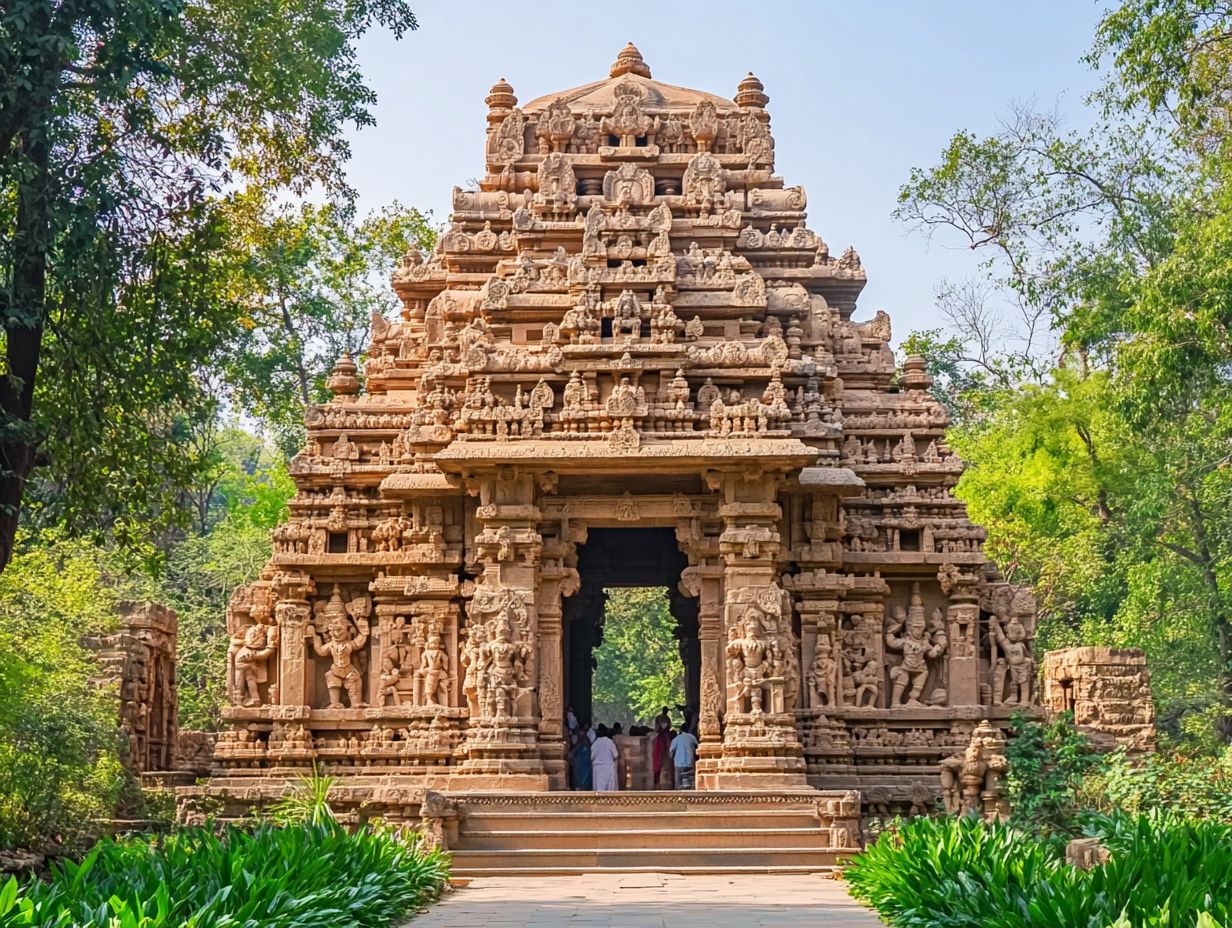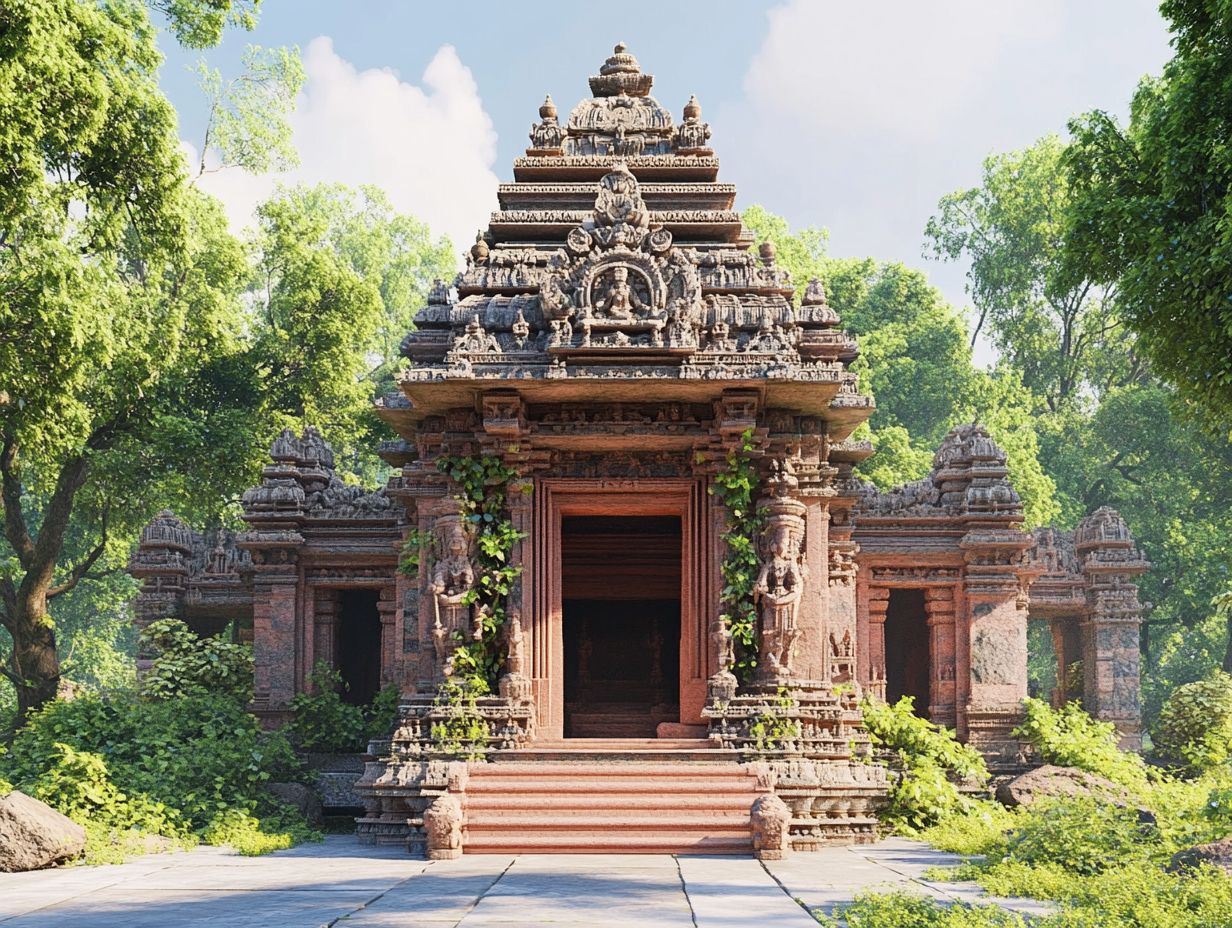How Old is Hinduism?
Hinduism, recognized as one of the world’s oldest religions, presents a rich tapestry woven from diverse beliefs, practices, and cultural significance. This exploration delves into its fascinating origins, emphasizing the profound influence of the Aryans and the ways in which their beliefs have shaped the evolution of this ancient religion and Indian culture.
At the heart of this faith lie core tenets such as karma, dharma, and moksha, alongside the major texts that serve as guiding lights for its adherents. The intricate dynamics of various sects, the role of caste, and the religion’s profound impact on Indian society and culture are also examined in detail, including the significance of Vedic texts and sacred places like temples.
Embark on this enlightening journey through the vibrant history of Hinduism, where each thread of belief adds depth to this ancient tradition.
What are the Origins of Hinduism?

Hinduism, esteemed as one of the world’s oldest religions, possesses profound roots within the cultural history of India. Its origins can be traced back to the Indus Valley civilization, which thrived around 2500 BCE, and it has evolved through significant historical milestones, including the Aryan migration and the formulation of revered texts such as the Vedas and Upanishads.
This ancient religion weaves a rich tapestry of beliefs, practices, and rituals that have intricately shaped the spiritual landscape of the subcontinent over countless millennia.
Who were the Aryans? What was their role in the Historical Development of Hinduism?
The Aryans were an ancient Indo-European society that migrated into the Indian subcontinent around 1500 BCE, bringing with them profound cultural and linguistic influences that would lay the groundwork for the early foundations of Hinduism and its revered texts, particularly the Vedas and Upanishads.
Upon their arrival, they encountered various local civilizations, sparking a complex interplay of ideas and traditions. The societal structures established by the Aryans were initially stratified based on professions but later evolved into the well-known caste system, which would have a lasting impact on Indian society for centuries to come.
Their oral traditions, which ultimately culminated in the written Vedas, established a rich spiritual and philosophical heritage. The Aryans played a significant role in shaping the religious practices and rituals that became core tenets of Hinduism, seamlessly intertwining their beliefs with local customs and creating a diverse cultural tapestry.
This blending of ideologies not only underscored the significance of the Vedic scriptures but also illuminated the Aryans’ pivotal contribution to the spiritual landscape of ancient India.
How did Hinduism Evolve from Aryan Beliefs?
The evolution of Hinduism from Aryan beliefs presents a captivating narrative marked by a sophisticated interplay of cultural synthesis. Here, the ancient traditions and practices of the Aryans intertwined with local indigenous customs, giving rise to a rich and diverse religious framework characterized by Vedic rituals, profound philosophical insights, and a wide array of spiritual practices.
This intricate blending process resulted in the coalescence of various deities, rituals, and belief systems, including polytheism, culminating in a multifaceted religion that remains vital to millions today. Vedic rituals, with their elaborate ceremonies and chants, play a crucial role in establishing a spiritual foundation, underscoring the connection between the divine and the earthly realm.
Moreover, this integration has fostered an environment for philosophical discourse, leading to the emergence of diverse schools of thought encompassing metaphysics, ethics, and cosmology. As these traditions evolved, so did the practices, allowing for a dynamic faith that continues to adapt while firmly retaining its core tenets of devotion and belief.
What are the Main Beliefs and Practices of Hinduism?
The core beliefs and practices of Hinduism encompass an extensive spectrum of spiritual elements, including the pivotal concepts of karma, dharma, and moksha. These principles guide the ethical and moral dimensions of life, while a rich tapestry of rituals and worship practices, including puja and yoga, engages various Hindu deities, embodying the profound spirituality inherent in the religion.
What is the Role of Karma and Reincarnation in Hinduism?
In Hinduism, karma and reincarnation are pivotal elements of the spiritual journey. Karma embodies the moral law of cause and effect, shaping an individual’s present life and future rebirths, while reincarnation signifies the cycle of samsara, illustrating the continuous flow of birth, death, and rebirth that defines one s spiritual evolution. These concepts are deeply intertwined with the broader philosophy of life and religious practices within the faith.
This intricate interplay underscores how an individual’s actions directly influence their ethical behavior and decisions throughout their existence. For example, a person who consistently engages in compassionate actions not only accumulates positive karma but may also find themselves reborn into more favorable circumstances, potentially affording them greater opportunities for spiritual advancement. On the other hand, negative actions may result in challenging life conditions, serving as catalysts for self-reflection and personal growth.
Through these diverse experiences, individuals are inspired to cultivate virtues such as kindness and honesty, thereby shaping their own karmic path and enhancing their spiritual journey toward liberation, or moksha.
What are the Major Hindu Texts?

The major Hindu texts, which serve as the bedrock of Hindu philosophy and spirituality, encompass the Vedas, the Upanishads, the Bhagavad Gita, and epic narratives like the Ramayana and Mahabharata. Each of these works offers profound insights into the beliefs, rituals, and ethical principles that govern Hindu life.
These texts function not only as sacred scriptures but also as vessels of diverse perspectives and philosophical inquiries that have shaped centuries of spiritual thought. The Vedas, regarded as the oldest scriptures, establish the framework for rituals and hymns. In contrast, the Upanishads explore metaphysical concepts, emphasizing the quest for knowledge and the connection between the individual soul and the universal spirit.
Meanwhile, the Ramayana and Mahabharata present timeless moral dilemmas and heroic narratives, illustrating the values of duty, righteousness, and devotion that permeate daily practices and cultural traditions. Together, these texts weave a rich tapestry of beliefs, intricately interwoven through the art of storytelling.
How Old is Hinduism?
Hinduism possesses an ancient lineage, with origins that extend beyond 4,000 years, establishing it as one of the oldest religions in existence. Its historical timeline illustrates a rich tapestry of cultural heritage that has profoundly shaped the spiritual landscape of India and far beyond its borders.
What is the Earliest Evidence of Hinduism?
The earliest evidence of Hinduism can be traced back to archaeological discoveries from the Indus Valley civilization, where artifacts and remnants indicate early practices that align with later Hindu beliefs. These include ritual bathing and reverence for sacred animals, underscoring the ancient roots and historical origins of the religion.
Among the most significant findings are ceramic figurines, seals, and urban drainage systems, which reflect a sophisticated societal structure intricately linked with spiritual elements. For instance, the great bath in the city of Mohenjo-daro highlights the importance of water for purification rituals, a concept that resonates throughout subsequent Hindu texts and practices.
Sacred animal motifs, such as those depicting cattle and elephants, reveal the early veneration that has persisted in contemporary Hindu worship. These discoveries not only illuminate the early social and spiritual life of the civilization but also establish a foundational understanding of how Hinduism began to evolve over time.
How has Hinduism Changed over Time?
Over the centuries, Hinduism has experienced profound evolution, skillfully adapting to historical influences, cultural exchanges, and modern challenges while steadfastly preserving its core beliefs. This dynamic process has resulted in a vibrant tapestry of contemporary practices that beautifully intertwine traditional values with modern aspirations, including the globalization of Hinduism and the influence of the Hindu diaspora.
Numerous historical events, including invasions, colonialism, and the establishment of trade routes, have played a pivotal role in shaping the dynamic essence of this religion, enabling it to assimilate various cultural elements. The interaction with diverse philosophies and religions has enriched its practices and rituals, giving rise to a wide spectrum of expressions.
In today’s society, practitioners encounter modern challenges such as globalization and secularization, which compel them to reinterpret ancient texts and philosophies in light of current issues. Consequently, the practice of Hinduism today is not merely a reflection of its storied past but also a thoughtful response to the complexities of the present, exemplifying a continuous journey of adaptation and resilience.
What are the Different Sects and Branches of Hinduism?
Hinduism comprises various sects and branches, each with its unique traditions, philosophy, and rituals. These include Vaishnavism, Shaivism, Shaktism, and Smartism, among others. Each sect worships different deities and follows distinct practices that contribute to the rich diversity within the religion.
Hinduism, an ancient religion, comprises a vast array of sects and branches, such as Shaivism, Vaishnavism, and Shaktism, each embodying distinctive beliefs and practices that address a wide spectrum of spiritual aspirations and spirituality.
This intricate tapestry is further enriched by regional variations and traditions, which contribute to the profound depth and complexity of this ancient religion.
What are the Differences Between Shaivism, Vaishnavism, and Shaktism?

Shaivism, Vaishnavism, and Shaktism stand as three of the most significant sects within Hinduism, each devoted to the veneration of a particular deity Shiva, Vishnu, and Shakti, respectively. These sects not only cultivate distinct theological perspectives but also engage in unique ritual practices, thereby enriching the broader religious tapestry.
Each sect emphasizes different divine figures while also showcasing varied beliefs about the universe, human existence, and the pathways to spiritual liberation. Adherents of Shaivism regard Shiva as the supreme being, participating in intricate rituals that include temple worship, chanting, and meditation. Conversely, Vaishnavism centers on fostering a personal relationship with Vishnu, employing practices such as devotional singing and vibrant community festivals.
Shaktism, on the other hand, brings forth the feminine divine through the worship of Shakti, celebrating the dynamic power embodied by the goddess. Despite their doctrinal distinctions, these sects frequently interact, united by shared beliefs in concepts like karma, dharma, and the ultimate goal of moksha.
This interaction fosters a sense of cohesion within Hinduism, encouraging dialogues that delve into their theological subtleties, and reflects the broader philosophy of life within the religion.
What is the Role of Caste in Hinduism?
The caste system is deeply intertwined with the concepts of dharma and karma.
The caste system, an integral component of the social framework within Hinduism, classifies individuals into four principal Varnas Brahmins, Kshatriyas, Vaishyas, and Shudras each designated specific duties and responsibilities that significantly shape their social standing and adherence to dharma.
Historically anchored in Vedic texts and ancient texts, the caste system emerged during a period when society was predominantly agrarian, necessitating a division of labor that clearly delineated individual roles. Over the centuries, it transformed into a rigid hierarchy, intricately linked with socio-economic status, marital prospects, and even access to education.
This stratification has engendered profound social consequences, including discrimination and inequality, particularly impacting those labeled as ‘Dalits’ or ‘Untouchables’. In contemporary society, despite legal measures prohibiting caste-based discrimination, lingering attitudes and systemic disparities endure, presenting ongoing challenges for individuals striving for equality and social mobility within this intricate socio-cultural landscape.
How has Hinduism Influenced Indian Society and Culture?
Hinduism, also known as Sanatana Dharma, has deeply influenced Indian society and culture.
Hinduism, with its rich history and ancient origins in the Indus Valley civilization, has had a profound influence on Indian society and culture.
Hinduism has profoundly shaped Indian society and culture, influencing an array of life s facets, from vibrant festivals and intricate rituals to the realms of art and literature. These elements poignantly reflect the religion s rich tapestry of diverse beliefs and practices, which have been meticulously handed down through generations, contributing to Indian culture as a whole.
What are the Major Festivals and Rituals in Hinduism?
Major festivals and rituals form an integral part of Hindu cultural identity.
The Hindu calendar is filled with various important festivals and rituals, many of which are guided by astrological beliefs.
Major Hindu festivals, such as Diwali and Holi, exemplify the vibrant rituals that punctuate the Hindu calendar, with each festival celebrating themes of light, joy, and the triumph of good over evil. Rituals like puja stand as essential expressions of devotion and spirituality.
These festivals not only showcase a rich tapestry of cultural heritage but also emphasize the importance of community bonding and the renewal of relationships among families and friends. Diwali, often referred to as the Festival of Lights, underscores the significance of homecoming and reconciliation, illuminating not just homes but also the hearts of those who partake in its celebrations.
In a similar vein, Holi, the Festival of Colors, heralds the arrival of spring and joy, effectively shattering social barriers and uniting individuals in a spirit of festivity and camaraderie. Alongside these jubilant celebrations, rituals such as fasting, creating rangoli, and performing aarti are integral to shaping both personal and communal identities, deeply rooted in the broader context of Hindu beliefs and values, and reflecting the ancient rituals passed down through generations.
What is the Impact of Hinduism on Art, Music, and Literature?
Hinduism’s influence extends to various artistic and cultural practices, including ancient rituals and the symbolism found in Hindu art.
The influence of Hinduism on art, music, and literature is nothing short of profound, inspiring a diverse array of creative expressions that encapsulate the religion’s themes, deities, and philosophical concepts. This cultural impact has resonated throughout history, revealing the depth of Hinduism’s contribution to the arts and Indian culture.
Artistic forms vividly convey the intricate narratives woven into Hindu mythology, presenting a worldview that underscores the interconnectedness of existence and the divine. Traditional Indian painting styles, such as Madhubani and Pattachitra, serve as prime examples; they often illustrate stories from sacred texts like the Ramayana and Mahabharata, bringing to life vibrant depictions of gods and goddesses.
In the realm of music, the intricate rhythms and melodies inherent in classical traditions such as Hindustani and Carnatic are deeply intertwined with spiritual themes. This musical heritage facilitates a meditative experience that transcends the ordinary, inviting listeners into a state of reflection.
Literature, spanning from ancient epics to contemporary poetry, continues to engage with and reflect Hindu values like dharma and karma. This literary exploration fosters a dialogue between past and present, enriching the cultural tapestry woven by Hinduism’s enduring legacy, and the broader Hindu cosmology.
Frequently Asked Questions

What is the age of Hinduism?
The exact age of Hinduism is unknown as it has evolved over thousands of years. However, the earliest Hindu texts were written between 1500 BCE and 1000 BCE.
How long has Hinduism been practiced?
Hinduism has been practiced for over 5000 years, making it one of the oldest religions in the world. Its practices and beliefs are deeply rooted in the Vedas and ancient texts.
Did Hinduism originate in India?
Yes, Hinduism originated in the Indian subcontinent, tracing back to the Indus Valley civilization, and is primarily practiced in India and Nepal.
At what age did Hinduism start spreading to other parts of the world?
Hinduism began to spread to other parts of the world, particularly Southeast Asia, around 800 CE, marking the beginning of the globalization of Hinduism.
How does the age of Hinduism compare to other major religions?
Hinduism is one of the oldest religions in the world, with only Zoroastrianism possibly being older. It is older than major religions like Christianity and Islam, which emerged in the first millennium CE. Its ancient origins have shaped a rich cultural heritage and diverse religious practices.
Has the age of Hinduism been confirmed by archaeological evidence?
Yes, archaeological evidence, including artifacts and excavated sites, supports the age of Hinduism being over 5000 years old.
